What you need to know before going to Yosemite and other national parks in 2022
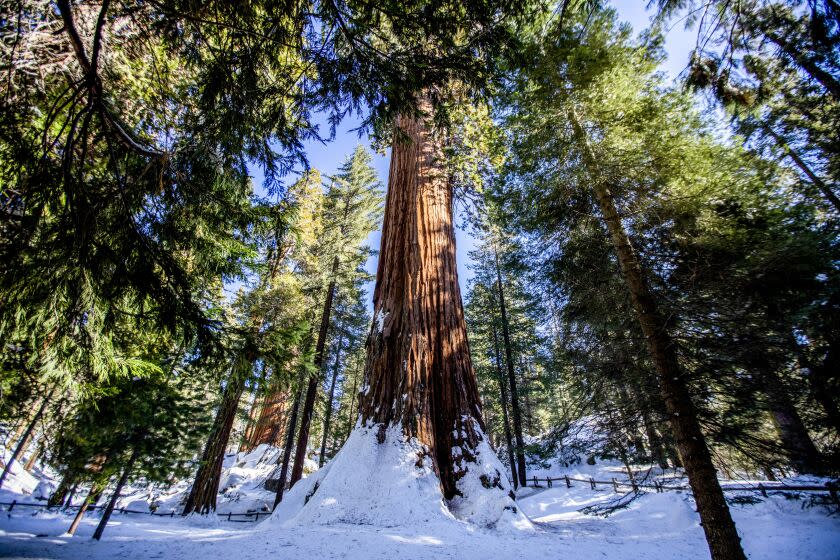
After a 2021 filled with pandemic uncertainty and anxiety about all things indoors, many travelers are sure to be thinking hard about national park destinations in the West this year. But there's plenty of change and uncertainty outdoors too.
If you're leaning toward a park trip, here's a roundup of what to expect at 17 parks in California, Arizona and Utah, including bigger crowds in the deserts, reduced services because of pandemic measures and worker shortages, miles of scorched earth in Sequoia, Kings Canyon and Lassen Volcanic national parks, a new reservation system in Arches National Park and the unresolved question of whether Yosemite will require advance reservations for summer daytime visits.
No matter which park you visit, travel these days means checking and rechecking park websites and following the parks' official Twitter and Instagram accounts to keep up with late-breaking changes. It's also wise to keep up with CDC travel advice, which includes getting vaccinated before you go anywhere and wearing a mask on planes, trains, buses and all other public transport.
Also, remember the National Park Service currently requires that everyone in its parks wear a mask, “regardless of vaccination status, in all NPS buildings, crowded outdoor spaces, and on all forms of enclosed public transportation.”
Channel Islands
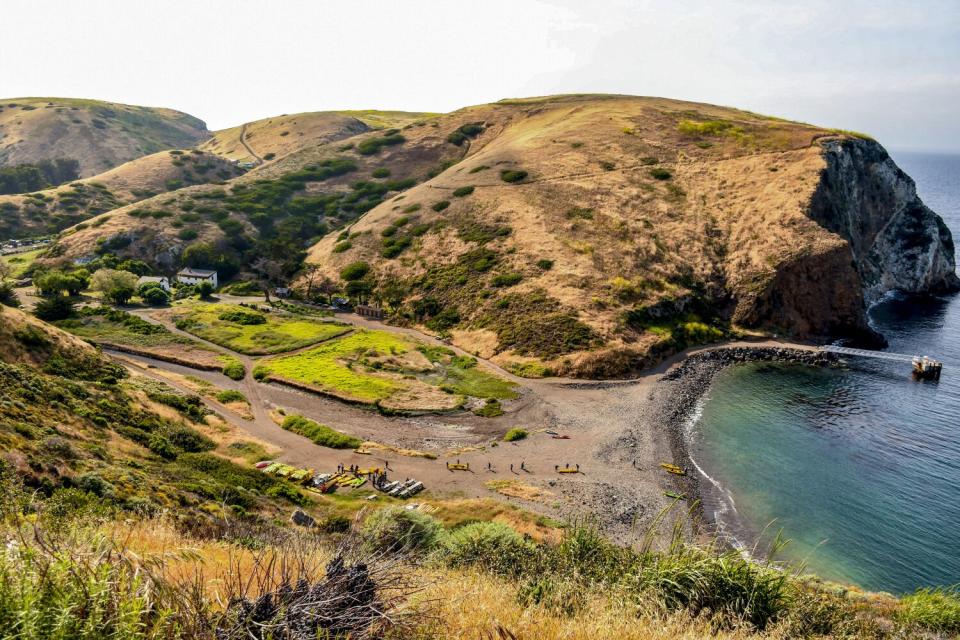
Santa Cruz Island’s Scorpion Anchorage is open for day visits, as is the nearby campground and hiking route to Smugglers Cove. But just east of that route, 1,411 acres blackened by the Scorpion fire of 2020 remain closed for restoration until further notice.
Anacapa Island, usually a popular day-trip destination for the boats of park concessionaire Island Packers, will be closed from mid-February through July for dock construction.
Santa Barbara Island’s dock is closed after damages from two years of winter storms “and is not expected to be repaired in the near future.”
Death Valley
Badwater Basin, Mesquite Flat Sand Dunes, Zabriskie Point and most other key locations are accessible as usual. Scotty’s Castle, severely damaged by flooding in 2015, will reopen no sooner than April 2023. Thorndike and Mahogany Flat campgrounds are closed.

Joshua Tree
Rangers report no significant closures, with all trails, campgrounds and visitor centers open. But be ready for company. The park tentatively counted 3.06 million visitors in 2021, its highest tally ever.
Kings Canyon
Together, Kings Canyon and Sequoia saw 78,675 acres burned in the KNP Complex fire, including more than 1,000 large sequoia trees. Still, Kings Canyon’s Grant Grove area is open, including roads to sequoia groves and snow play. But with 2 feet of snow on the ground in many places, tire chains are required on all vehicles headed to the grove.
To reach Grant Grove, which includes the General Grant Tree, thought to be the second-largest tree on Earth, approach by way of the Highway 180 entrance to the park. Be sure to get a weather update before entering the park.
Lassen Volcanic
Much of this park is typically covered by snow in the winter, with roads closed. This year, the snow covers miles of ashes. The Dixie fire of 2021 burned the southeastern two-thirds of the park — 73,240 acres. The blaze, which lasted from July through October, destroyed or damaged 12 park structures, including seven cabins on the north shore of Juniper Lake and two bungalow units, the annex and water plan of Drakesbad Guest Ranch. Bridges on Mill Creek Falls were destroyed, and the Kings Creek Falls overlook was damaged.
The park remains open, but as of early January, no ranger-led snowshoe hikes are scheduled, and the park’s visitor information phone line is down, with no estimate of when it will be up again. Winter access is largely limited to the Manzanita Lake and Southwest areas, within a mile of the park entrances. (Carry tire chains in your car.) The 30-mile park highway is closed to through traffic for the winter/spring snow season, and no food services or gasoline are available in the park.
Pinnacles
This park, usually among the state’s loneliest, saw its popularity jump in 2021. Rangers tentatively counted nearly 350,000 visitors — more than it drew in 2019 and 2020 combined. The park’s east and west entrances are open, as are most of its parking lots and trails. The Bear Gulch and Balconies caves have resumed normal schedules. The Bear Gulch Reservoir loop is accessible, as is the High Peaks trail to Balconies Cliffs loop. The park's bookstore is open Wednesday through Monday. But its shuttle service is suspended until further notice.
Redwood
Most operations continue as usual, but the Lost Man Creek Trail (and the Geneva Road access route that leads to it from Highway 101) has been closed for bridge repairs since August, with reopening expected in early 2022.
Sequoia
Here, too, there’s plenty of snow (and beneath it, plenty of scorched earth). For six miles from the park entrance to Hospital Rock Picnic Area, the main thoroughfare Generals Highway is open, revealing “a mosaic of burned and unburned chaparral and oak woodlands,” the National Park Service reports. Also open: Amphitheater Point and the Sunset Rock and Congress trailheads. But as of Jan. 10, plows were still working to clear access to the Giant Forest, General Sherman Tree and Wolverton area, where snow can be 3 to 4 feet deep.
The portion of Generals Highway connecting to the Giant Forest was expected to reopen for day use on Jan. 21. The portion of the highway that runs through Sequoia National Forest to connect Sequoia and Kings Canyon parks is not expected to reopen until spring at the earliest. Some foothills areas and trails are still closed due to hazards remaining from the KNP Complex fire.
Yosemite
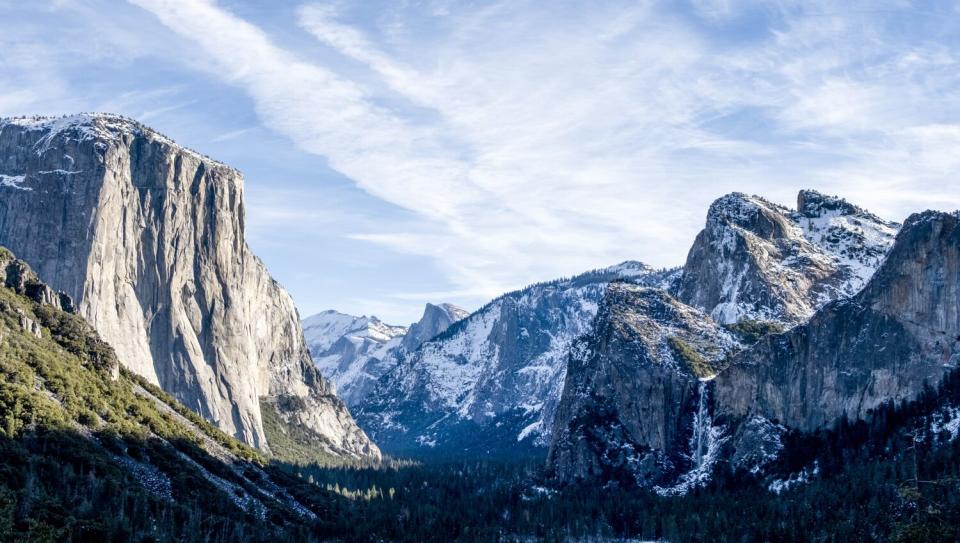
The big question, unanswered so far, is whether Yosemite will impose the same summer day-use reservation requirement that it used in 2020 and 2021 to reduce overcrowding and cope with the pandemic. That experiment drew praise from many quarters, but it also makes spontaneous Yosemite Valley road-tripping impossible.
The park has said it will not require reservations for "Firefall," the February time period when the angle of the setting sun can cause Horsetail Fall to light up with an eerie orange glow. (The tentative dates for this year are Feb. 10-22.)
In any event, Glacier Point Road, a popular route leading to spectacular valley views, will be closed to all traffic (including hikers and cyclists) for all of 2022 because of repairs. Thirty-minute delays are forecast in 2023 as the work continues.
The Yosemite Valley Shuttle is running with a reduced schedule. The Badger Pass Ski Area is scheduled to stay open through April 3, depending on conditions, and the Curry Village Ice Rink is expected to stay open into March, with the same caveat. The Ahwahnee hotel is doing business as usual, but is expected to close for seismic upgrades Jan. 2 through March 2, 2023. More updates on park concessions, including restaurants and lodgings, are here.
Yosemite Valley’s campgrounds will be mostly on their usual schedules in 2022 (with a new lottery system in place for summer bookings in the North Pines Campground). North of the valley, several campgrounds that shut in 2021 will reopen in 2022, including Tamarack Flat, White Wolf, Yosemite Creek and Porcupine Flat. Elsewhere in the park, several campgrounds are closed because of lower staffing levels or rehabilitation work, including Crane Flat and Bridalveil Creek campgrounds (both closed for all of 2022) and Tuolumne Meadows Campground (closed for all of 2022 and 2023).
Arizona
Grand Canyon
At this park, always among the nation’s most popular, it’s mostly business as usual. The South Rim is open. The more remote North Rim is closed for the winter as usual, due to reopen May 15 through Oct. 15.
Petrified Forest
The park’s Painted Desert Inn (now a museum, not a lodging) is temporarily closed.
Saguaro
The park set an attendance record in 2021, with a tentative count of 1.04 million visitors, up from a previous high of 1.02 million in 2019. Exhibits, museums and theaters remain closed at the park’s Rincon Mountain and Red Hills visitor centers, and both buildings are limiting visitors to 10 at a time.
But the park’s long-term situation is worrisome. Kurt Repanshek, founder and editor-in-chief of NationalParksTraveler.org, has put Saguaro on his website’s latest list of threatened and endangered parks, noting that “the park's signature cacti, and many other floral and faunal species that call Saguaro home, face many challenges — urban development, invasive species, and drought and wildfires amplified by climate change rank among the most-pressing.”
Utah
Arches
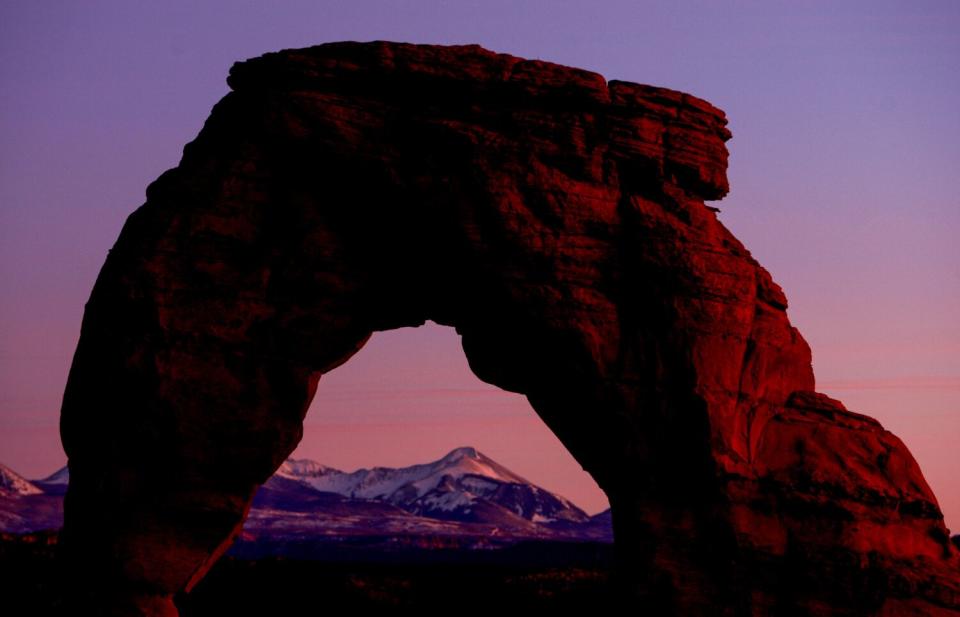
This park set an attendance record in 2021, with a tentative count of 1.8 million visitors and frequent reports of traffic jams at the park entrance near Moab. This year, rangers will try to ease the crowding with a “temporary, pilot timed entry system.” Anyone planning to visit from April 3 to Oct. 3 will need an advance booking.
Bryce Canyon
The park’s 18-mile Main Road is fully open, but rangers warn of icy patches and occasional closures for snowplowing. Fairyland and Paria View roads are open to pedestrians only. As is usual in winter, the Wall Street side of the park’s Navajo Loop trail is closed, as is the Rim Trail between Inspiration and Bryce points. The Peekaboo Loop Connecting Trail is also closed because of risky winter conditions.
Canyonlands
This park set a yearly attendance record before December had even begun. Through 11 months, rangers tentatively counted about 889,000 visitors, far surpassing the previous high of about 739,000 in 2018. Most roads in the park are open, subject to the usual winter conditions. Shafer Trail is closed because of hazardous ice and snow conditions.
Capitol Reef
Here, too, rangers counted record attendance — more than 1.4 million visitors, up from previous highs of 1.2 million in 2018 and 2019. The visitor center will install new exhibits in February.
Zion
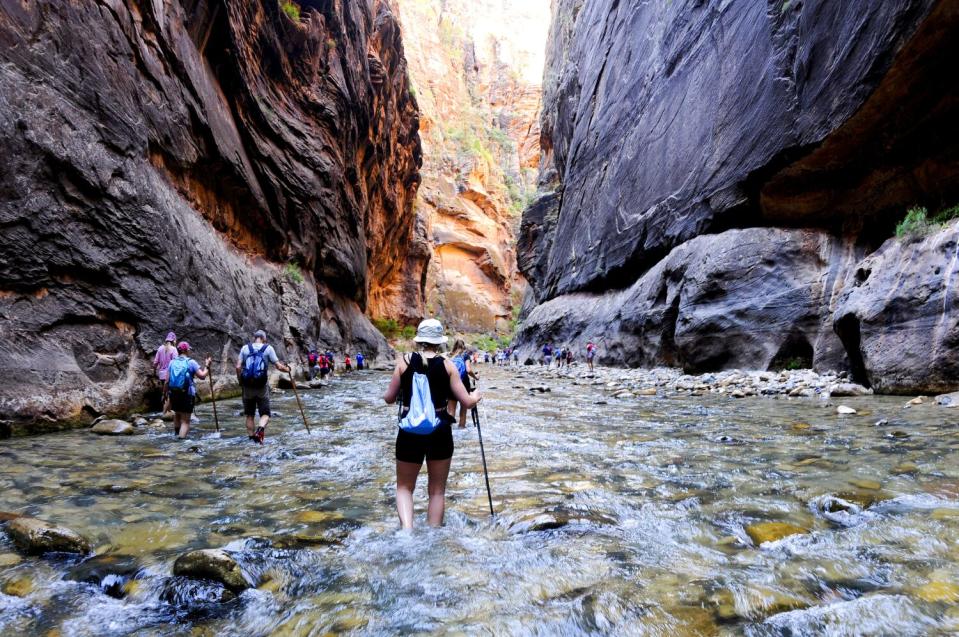
This is the busiest national park in Utah, and it’s busier than ever before, with a tentative tally of 4.8 million visitors last year, up from a previous high of 4.5 million in 2017 and 2019. The park is adding restrooms with the Human History Museum Shuttle Stop Comfort Station, with completion scheduled for late March.
Meanwhile, the Upper Emerald Pools Trail is closed indefinitely because of rockfall, and rangers are warning visitors not to make contact with water in North Creek or drink stream water anywhere in the park because of toxin-producing cyanobacteria. Visitors are also advised to avoid swimming or submerging their heads in the North Fork of the Virgin River for the same reason.
This story originally appeared in Los Angeles Times.

